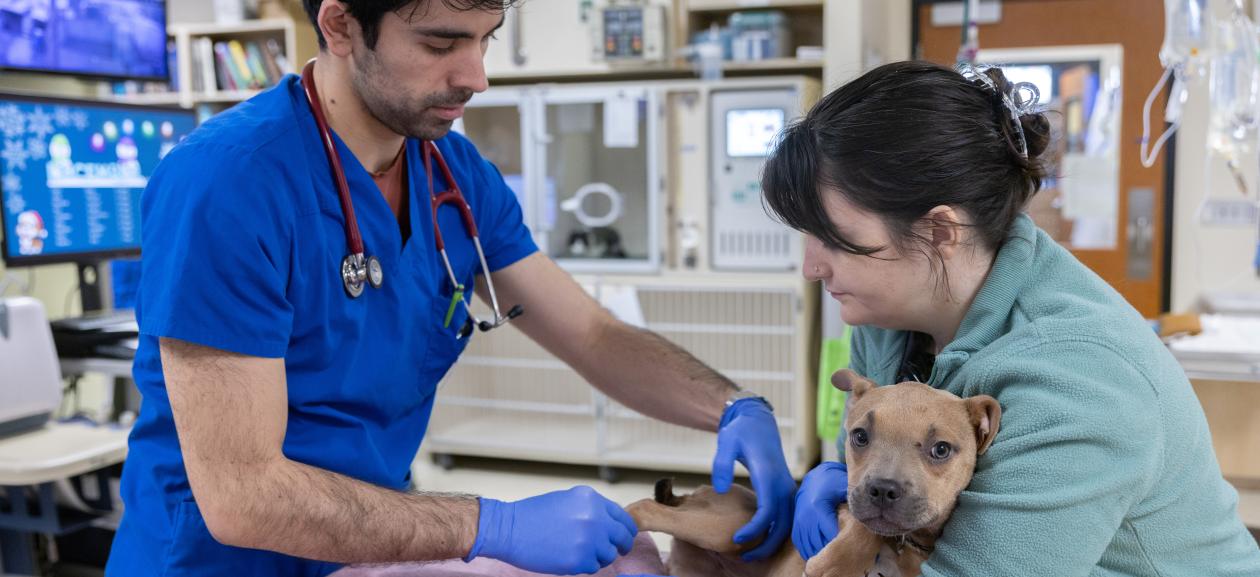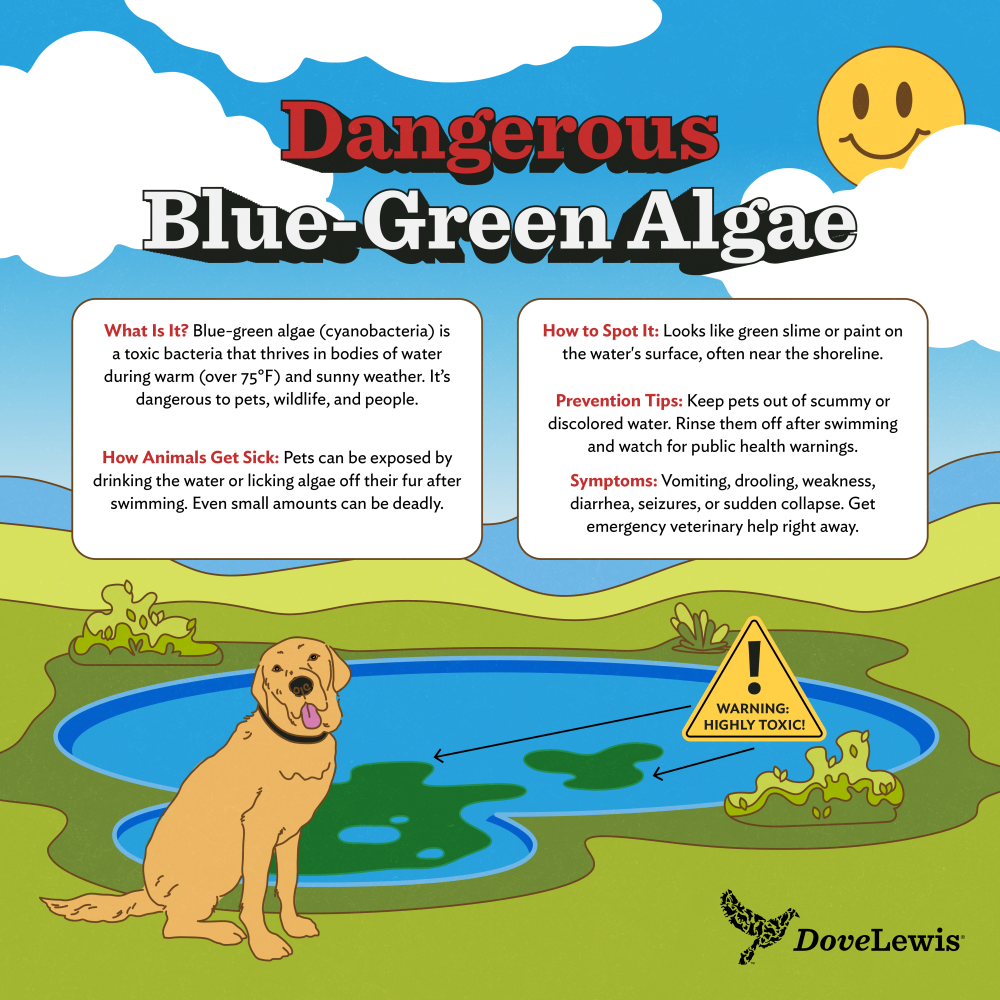
Danger in the Water: Protect Your Pet from Toxic Algae
There’s nothing better than watching your dog dive into the water on a hot summer day—ears flapping, tail wagging, pure joy. But as temperatures rise, so does the risk of a hidden and potentially deadly danger in local lakes, rivers, and ponds: toxic algae.
At DoveLewis, we see heartbreaking cases every year of pets who become critically ill after swimming in or drinking from water contaminated by harmful algal blooms. While not every body of water poses a risk, it only takes one exposure to turn a fun outing into a medical emergency.
 What Exactly is Toxic Algae?
What Exactly is Toxic Algae?
Despite the name, “blue-green algae” isn’t true algae—it’s a type of bacteria called cyanobacteria. These bacteria grow rapidly in warm, slow-moving or still water and can form harmful algal blooms when conditions are right: hot temperatures, stagnant water, and excess nutrients such as fertilizer runoff.
You might notice it as bright green or blue scum floating on the surface, or as mats or foam collecting near the shore. But here’s the tricky part: water can look clear and still contain dangerous toxins produced by these bacteria.
Cyanobacteria produce several toxins—some that affect the liver, others the nervous system—which can be fatal to pets. While people can also get sick, dogs are at especially high risk because they often drink from lakes or ponds, play in the water, and lick their fur afterward, ingesting toxins without their owners realizing it.
Symptoms of Toxic Algae Exposure in Pets:
If your pet has recently been near water and shows any of these signs, don’t wait—get them to a veterinary ER immediately:
- Vomiting or diarrhea
- Panting or difficulty breathing
- Lethargy or sudden weakness
- Drooling or foaming at the mouth
- Seizures or muscle tremors
- Collapse
These symptoms can develop within minutes to hours. Unfortunately, there is no antidote for most cyanobacterial toxins, so early intervention is critical.
How to Keep Your Pet Safe:
- Avoid water with visible algae, odd smells, or surface scum
- Check for advisories on the Oregon Health Authority’s algae bloom webpage before visiting lakes or rivers
- Don’t let pets drink from outdoor water sources—bring your own fresh water
- Rinse your dog thoroughly after swimming
- Keep pets leashed near unfamiliar or unmonitored bodies of water
What to Do if You're Concerned:
If you suspect your pet may have come in contact with toxic algae, don’t wait for symptoms to appear. Contact your veterinarian or bring them to an emergency hospital like DoveLewis immediately. The faster your pet receives supportive care, the better their chances of recovery.
Toxic algae isn’t worth the risk. Staying informed and taking simple precautions can help your dog enjoy a safe, splash-filled summer, without the emergency visit.
Recent Posts
Holiday Hazards for Your Pet
Deck the halls with boughs of holly … but be sure it’s out of reach of your furry friends! It’s easy to get swept up in the festivities of the season, but don’t forget that added fun means added risks for your pets.
Why Chocolate Is So Risky for Pets
Milk or dark, candy or cake – chocolate may be one of our favorite sweet treats, but it’s definitely not meant to be consumed by our pets.



